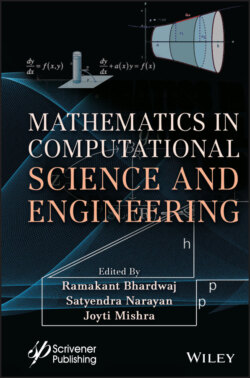Читать книгу Mathematics in Computational Science and Engineering - Группа авторов - Страница 49
2.4 Overview of Inversion Schemes
ОглавлениеIn the preceding sections, iterative approaches of electrical inversion methods are described. These approaches consist of a function called “objective function”. It starts an initial parameter guess, updated at the end of every run iteratively and then applied to the “objective function” in a least-squares manner. This process is continued until a predefined level of acceptable error or a fixed of number of runs is obtained. Narayan et al. [9] has explained various versions of objective function effectively. Electrical inversion methods may be further differentiated based on the use of data variances in the objective function. For all practical purposes, electrical field data are not uniformly affected by the model properties and therefore, the use of data variances is rarely justified.
Hohmann and Raiche [21] have given a good description and classification of model properties in terms of relevance, non-relevance, or irrelevance. The importance and relevance of model properties can also be described theoretically using eigenvalues and its size. The “singular value decomposition” (SVD) of a matrix has been found useful in the least-squares electrical inversion methods. Tripp et al. [22] have given an excellent overview of this technique in electrical resistivity inversion. It is important to note that the SVD technique needs some special efforts that are computationally demanding and time consuming.
Another computationally attractive technique is described in the electrical resistivity inversion, which uses a “damping factor”. Different criteria are described in the research literature for the selection of “damping factor”. Narayan et al. [9] have given a good account of the various electrical resistivity inversion schemes and methods. The main benefit to use a damping in inversion methods is that it produces a stable solution. Constable et al. [23] have introduced an Occam’s inversion, which is receiving attention in the electrical geophysics. Without knowing magnitudes of the eigenvalue, it is difficult to quantify an appropriate amount of damping. Oristaglio and Worthington [24] have described a method and criterion for selecting the amount of damping. It is important to note that the selection of the amount of damping is highly debatable. A different approach of selecting relatively high damping in the initial part and gradually low in the later part of the inversion is introduced by Eaton [25]. It may only be done based on a genuine experience.
